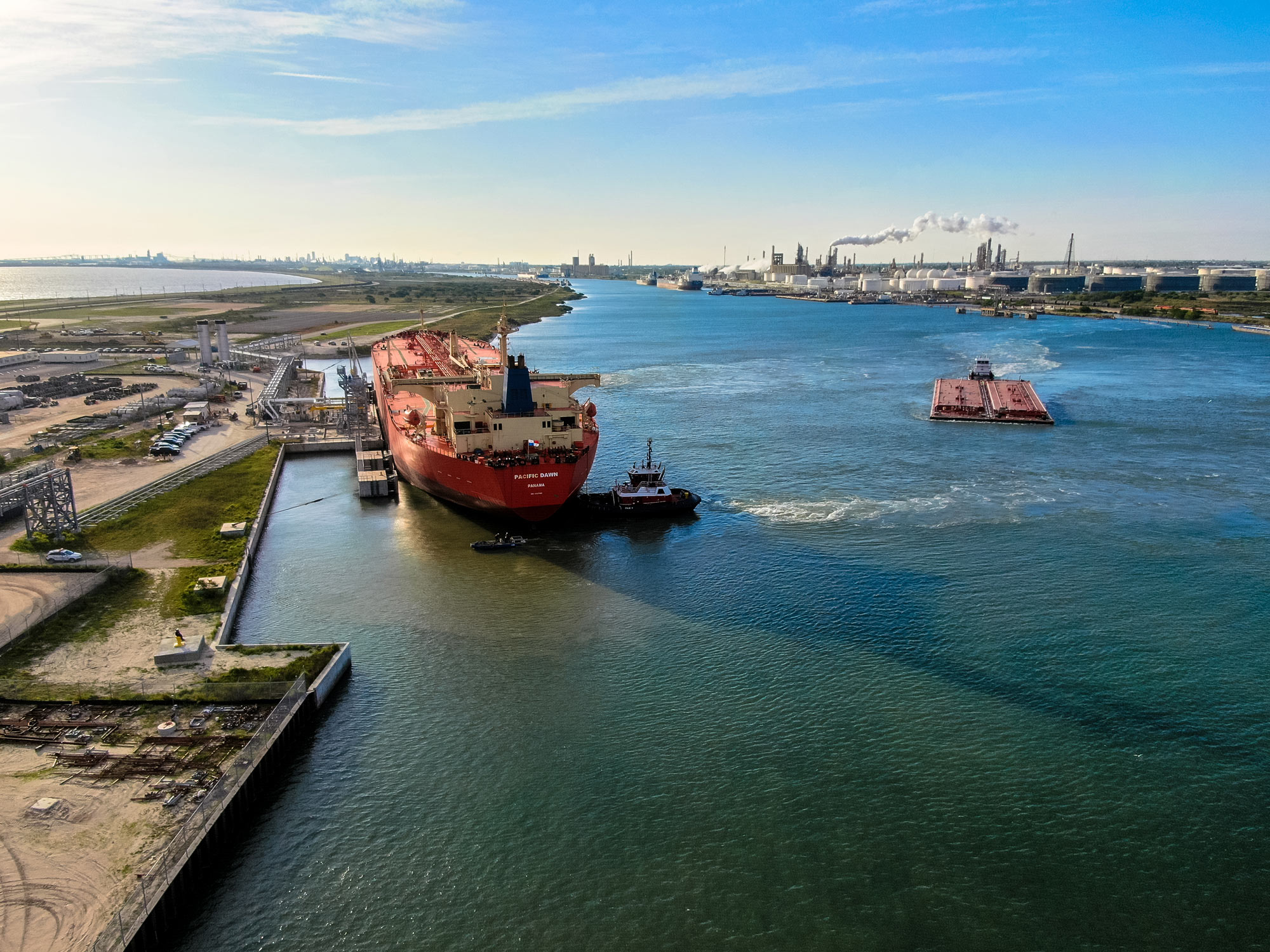
The geography of the HCH2 includes about 40% of the state of Texas, including the Trans Permian Hub region, which has been assimilated into the HCH2. Merging the two hub concepts creates a unified framework that leverages existing infrastructure and commercial connections between West Texas energy production and the nation’s premier energy gateway.
The scope of the HCH2 includes common use, connective infrastructure projects and clean H2 production via electrolysis of water and via thermal conversion of natural gas coupled with carbon capture for industrial use or geologic storage.

Hydrogen (H2) is the simplest element on earth; each atom has just one proton and one electron. Hydrogen can store and deliver usable energy, but it doesn't typically exist by itself in nature and must be produced from compounds that contain it.
H2 is a versatile energy carrier that offers a path to a clean (i.e. reduced climate impact) energy future. H2 can be blended with other fuels, like natural gas, to displace carbon (thus reducing CO2 emissions and associated climate impacts) or can be used to power fuel cells, with only fresh water as a byproduct. H2 is already produced and used around the globe in a variety of industrial and mobility applications.
Hydrogen can:Production:
Hydrogen can be produced through low-carbon pathways using diverse, domestic resources—including fossil fuels, such as natural gas and coal, coupled with carbon capture and storage; through splitting of water using nuclear energy and renewable energy sources, such as wind, solar, geothermal, and hydro-electric power; and from biomass through biological processes.
Hydrogen can be produced via several different processes. Thermochemical processes that use heat and chemical reactions to release hydrogen from fossil fuels (e.g. natural gas) or organic materials and electrolysis, which uses renewable electricity to split water molecules, are the two primary production pathways today.
The projects within the HCH2 include thermal conversion of natural gas and electrolysis of water, the latter of which is the main mode of production. This electrolysis will be powered by renewable electricity from a variety of sources.
Distribution:
H2 and H2 co-products like ammonia and methanol will be moved to markets within and outside the HCH2 via a diversity of modes (pipeline, rail, barge, vessel). Clean Hydrogen Hubs will be the foundation of a national clean hydrogen network that will play a significant role in decarbonizing multiple sectors of the economy. Scaling clean hydrogen production to match growing regional demand is the key to achieving large-scale, commercially viable hydrogen ecosystems.
A defining and differentiating attribute of HCH2 is the inherent potential world scale—and cogent, detailed plan for scalability—of the production therein. At full implementation, HCH2 will support H2 market liftoff to an extent that it will supply the H2 economy well beyond its regional boundaries. These regional developments will be the foundational infrastructure for distributing hydrogen nationwide.
Sixty percent or more of the H2 produced within the HCH2 will likely be used to produce ammonia and other chemical derivatives for direct combustion or use as marine fuel, fertilizer, and as a long-distance H2 carrier molecule that can be “cracked” to yield free H2. Up to 25% of the H2 from HCH2 projects may be used to generate electricity. The remainder is expected to be used to decarbonize industrial processes such as petrochemical refining and steel or cement manufacturing or will fuel municipal or freight vehicles (e.g. busses, trucks, and trains).
The HCH2 team and partners are working across the region to define and address context-specific community needs and priorities. HCH2 is expected to provide upskilling, training, and education opportunities for the existing energy sector workforce, creating tens of thousands of construction jobs and thousands of high-paying, high-quality jobs in South Texas and West Permian Basin counties; more than 75% of this area has been designated as “disadvantaged” according to White House Council on Environmental Quality (CEQ)’s Climate and Economic Justice Screening Tool.
PCCA and HCH2 collaborators will concentrate direct investment in four pillars of community equity: Energy Justice, Housing Justice, Restorative Justice, and Educational Justice.
The Port’s existing Promotion and Development Fund (currently 3% of the Port’s annual revenues) will be leveraged as an additional mechanism for community investment.
“The HCH2 leverages Port Corpus Christi’s prominence in the energy marketplace as well as the existing physical and commercial connection between the Permian Basin and the Gulf Coast,” said Jeffrey Pollack, Chief Strategy and Sustainability Officer for the Port of Corpus Christi. “Our fully integrated Hub creates the roadmap for diversifying and decarbonizing this historic energy-producing region with the potential to deliver transformative benefits to communities in the Hub. We’re building on our long history of community engagement as the economic engine of the region to create new jobs and accentuate community benefits that truly reflect community priorities.”
"Our fully integrated Hub represents a large portion of the state of Texas and every link in the clean hydrogen value chain, from production to community end use. Our capacity to advance federal decarbonization objectives and Justice40 Initiative objectives is profound."
